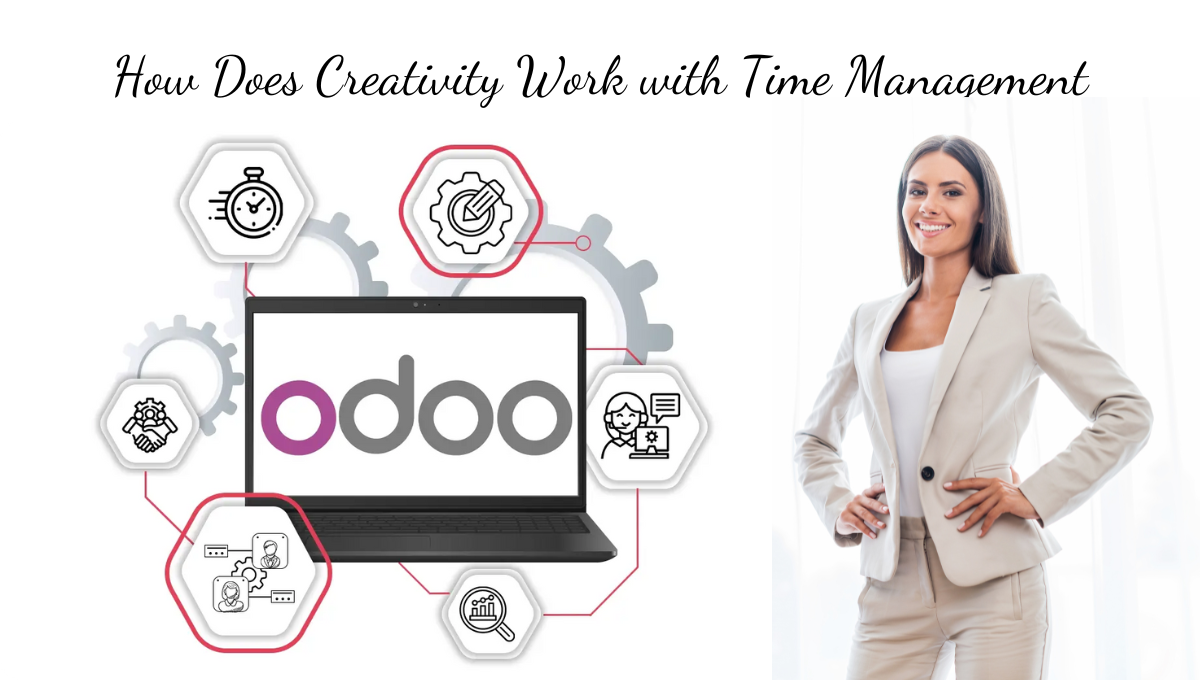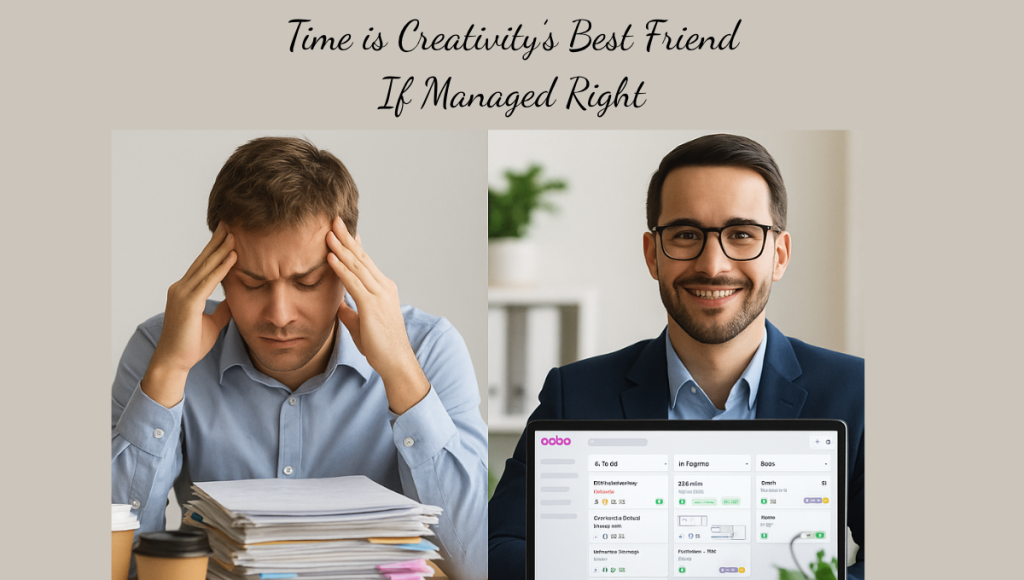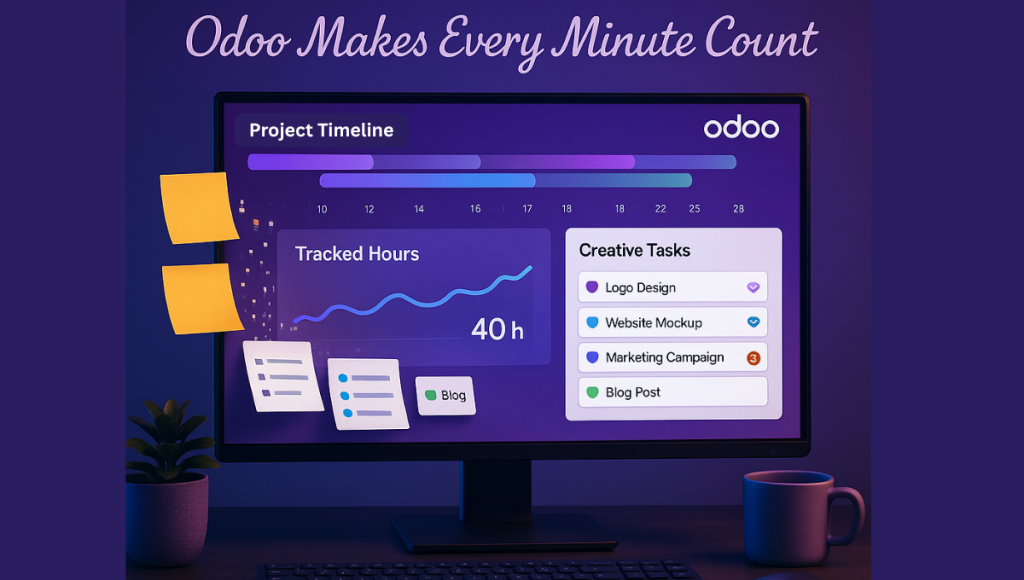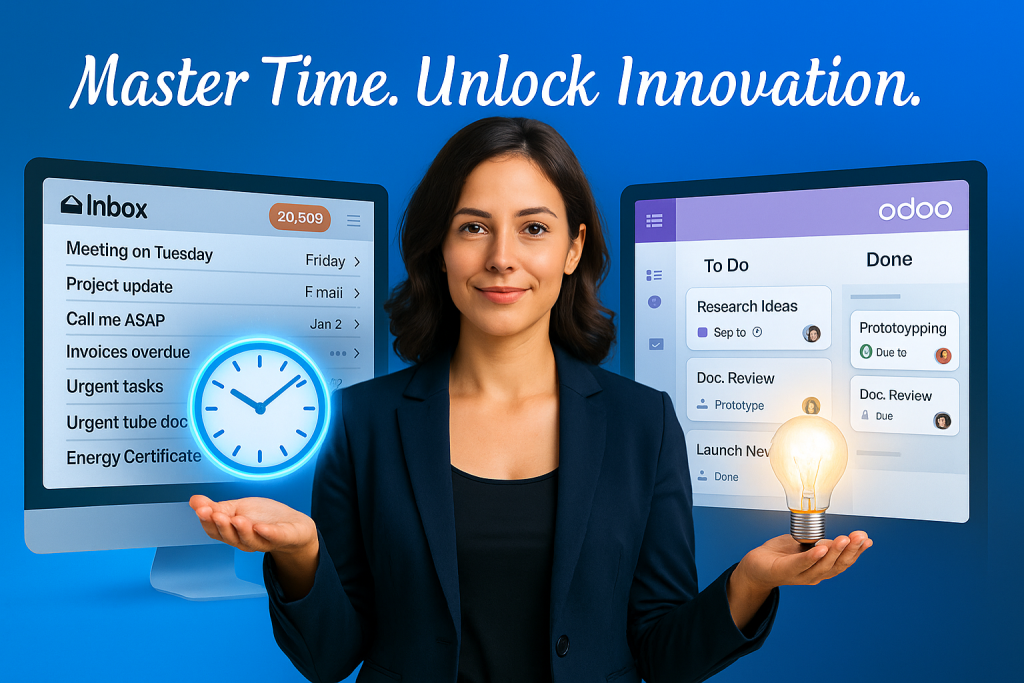
Everyone knows that time management is not easy for managing a successful business, especially if you wanna do something creative. Effective time management is the practice of planning and prioritizing your tasks so you can use your time more effectively to achieve business goals. Odoo ERP is an all-in-one business software platform that combines modules for project management, CRM, sales, accounting, and more. It helps organizations streamline operations and improve visibility across every workflow. In creative businesses, balancing open-ended innovation with strict schedules is crucial.
After all, time is an irreplaceable asset, which is more valuable than money, because once it’s gone, you can’t get it back. Good time management lets teams focus on high-impact work: focusing on what matters most makes each work hour count. Lack of time control can suppress your creativity by forcing teams into reactive “fire‑fighting” mode instead of exploration. Odoo’s integrated business software suite helps creative teams plan, track, and automate workflows so they stay organized without stifling innovation.
Also Read: ERP for Small Companies
Importance of Time
Time is finite and must be managed carefully. Effective time management means you are meeting deadlines, increasing productivity, elevating work quality, and reducing stress, which establishes a culture of efficiency. We cannot extend time, so planning and prioritizing tasks is key.
Here is an example: scheduling focused creative blocks and clear deliverables ensures that each idea has a chance to develop. As one expert puts it, solid time management lets you clarify your goals, eliminate distractions, and focus your attention on your most essential activities. In other words, when teams respect the importance of time, they accomplish more with less effort and maintain better balance.
Consequences of Poor Time Management
When time isn’t managed well, creativity and productivity both suffer. The consequences of poor time management include missed deadlines, chaotic workflows, and stressed teams. Productivity suffers: people scramble to complete urgent tasks, quality drops, and professional relationships strain. Studies and expert guides report that chronic lateness or procrastination can strain relationships with colleagues, clients, and superiors, reduce job satisfaction, and stall careers.
Lack of time discipline can suppress creativity and innovative thinking because teams never have the slack to brainstorm or iterate. Financially, poor scheduling can waste resources and balloon project costs, as failing to control time leads to burnout and lost opportunities. By contrast, mastering time prevents these pitfalls: projects stay on budget, decisions improve, and people feel more in control.

Time Management Exercises
You can build time management skills through practice because regular exercises and habits help teams sync creativity with schedules within creative industries and commercial teams. For example, many companies hold brief daily stand-ups or weekly planning sessions to set goals and deadlines.
Teams adopt these time management exercises, from focused ideation sprints to structured review meetings, which create accountability without killing innovation. Practices like time-blocking (allocating set hours to design work) or keeping a “not-to-do” list (deciding which tasks to skip) train people to guard their creative time. Below are some key exercises that high-performing teams utilize to manage their time:
Target Setting
Define clear objectives or deliverables for each project phase. For creative projects, this mean setting a goal like “sketch 5 concepts this week” or “complete storyboard draft by Friday.” Clear targets guide teams’ energy and prevent scope creep.
Focus on What Matters Most
Prioritize tasks by impact. As Stephen Covey advised, “The key is not to prioritize what’s on your schedule, but to schedule your priorities”. In practice, this means identifying the 1–3 tasks that move a project forward and doing them first. Odoo’s tools can help: you can flag or filter the highest-priority tasks in a Kanban board so the team always “swim with the main current” of work.
Establish a Timeline
Assign deadlines and milestones to tasks. Breaking work into a timeline prevents last-minute rushes. Odoo’s Project app offers a Gantt view, “a timeline that gives you an overview of your tasks, their dependencies, and planned dates”. Creative teams can visualize progress and spot bottlenecks early by scheduling tasks on a timeline.
Write Down What to Skip
Consciously decide which tasks are low-value and can be dropped or deferred. Maintaining a “don’t do” list is as important as a to-do list. For instance, a designer might note that checking all email once per day is sufficient, so they don’t let constant pings steal creative time. This exercise helps teams focus on what matters most by not getting bogged down in trivialities.
Utilize Odoo Business Software
Leverage Odoo’s integrated ERP features for time tracking and analysis. Odoo is a project app and full business suite. For example, you can log billable hours with the Timesheets app, link tasks to accounting, or use Odoo CRM to set sales or project targets. Encloud Solutions reports that Odoo is used by millions of businesses worldwide; its all-in-one nature means you spend less time switching apps and more time being productive.
Also Read: ERP Integration Services

The table below summarizes how these exercises map to Odoo features:
| Exercise | Purpose | Odoo Application |
| Target Setting | Define clear goals and outcomes to guide activities | Use Odoo Goals, CRM targets, or project milestones to track objectives and progress. |
| Focus on What Matters Most | Prioritize key tasks that contribute most to objectives | Mark tasks as high-priority in Odoo Projects; filter the Kanban board by importance. |
| Establish a Timeline | Allocate deadlines and milestones for tasks | Use Odoo Project’s Gantt chart – a timeline overview of tasks and dates. |
| Write Down What to Skip | Identify low-value tasks to avoid wasting time | Keep a “not-to-do” list outside Odoo; use task tags or statuses to denote blocked tasks. |
| Utilize Creative Project Management Tools | Use visual, flexible tools for planning creative work | Odoo Projects offers Kanban (sticky-note style) and Gantt (timeline) views. |
| Utilize Odoo Business Software | Leverage an integrated ERP to centralize operations | Apply Odoo Apps (Timesheets, CRM, Projects, etc.) for unified planning, tracking, and billing. |
How to Be More Time Efficient with Customized Odoo ERP
Odoo’s modular ERP can be customized to enforce time discipline and visibility across projects. For instance, keeping on track is easier when progress is transparent: Odoo’s Project dashboard shows live updates on tasks, resources, and profitability so everyone sees the project’s status in real time. Team leads get alerts on delays, and the system automatically logs changes.
To never miss a deadline, Odoo lets you set task deadlines and milestones that trigger reminders. For example, the Timesheets app logs work hours against tasks so managers can spot overruns early. You can even invoice by time logged, reinforcing the habit of accurate tracking.
For detailed time tracking analysis, integrated reporting is key. Encloud Solutions’ Versatile Time Logger System can tie into Odoo and other CRM tools for in-depth time reports. Odoo itself generates reports on time spent per project, helping identify bottlenecks. You can analyze which tasks consumed more time than planned, spot trends across teams, and refine future estimates.
In practice, many Odoo customers create custom dashboards (using Odoo Studio) to track the most relevant KPIs for their creative workflows – for example, “average hours per design iteration” or “ratio of planned vs. actual effort.” These insights close the loop: the next time a creative project starts, teams know where they overscheduled or under-delivered.
Also Read: Odoo ERP Software
Throughout this process, Odoo’s flexibility lets you tailor the system. Need a built-in Pomodoro timer? There are Odoo apps for that. Want automatic reminders for routine tasks? Use Odoo’s Scheduled Actions. By utilizing Odoo business software, you transform time management from guesswork into a data-driven discipline. This allows creative staff to focus on innovation, knowing that processes and tools are keeping the schedule in check.

FAQs
How do creatives manage their time?
Creative professionals often set creative rituals and use disciplined planning. For example, they dedicate fixed time blocks to ideation and to routine tasks. According to productivity guides, creatives “establish creative rituals, prioritize tasks, and use time blocking techniques.” By assigning specific time slots for innovation, they boost productivity while maintaining consistency.
What is the 7-8-9 rule for time management?
The 7-8-9 rule is a simple guideline: spend 7 hours on sleep, 8 hours on work or study, and 9 hours on everything else (meals, exercise, personal time). In theory, this balances rest, focused work, and life’s other needs, helping ensure you’re rested and productive.
How does time affect creativity?
Time affects creativity in two ways. Having too little unstructured time can suppress creative thinking, because people rush between tasks. On the other hand, well-designed routines or changes in routine can boost creativity. For example, varying your routine stimulates the brain and can “increase focus, productivity, and even creativity and innovative thinking”. In short, structured time blocks free the mind to create, but too rigid a schedule can be stifling.
What is the 60/40 rule for time management?
The 60/40 rule advises spending roughly 60% of your available time on your biggest, goal-advancing tasks and 40% on everything else. In other words, focus most of your week on the projects that move the needle, and leave the remaining time for routine duties (emails, admin, errands). High performers found that using a 60/40 split helps prevent burnout and ensures critical goals get done.
What are the 5 P’s of time management?
A popular framework is the “5 P’s” of time management. They are Prioritize (do the most important tasks first), Plan (schedule and allocate time for each task), Productivity tools (use apps or systems to streamline work), Proactive mindset (anticipate challenges instead of just reacting), and Personal well-being (schedule breaks and self-care to stay energized). Together these guide efficient, balanced workflows.
How does routine affect creativity?
Routine has a double-edged effect. A consistent routine provides structure and stability, which can help free cognitive resources. However, overly repetitive routines may lead to autopilot behavior and boredom. Changing up your routine even slightly can “stimulate your brain” and boost creativity. Creative teams often balance routine (for discipline) with variety – for example, they may hold random “innovation days” or change work environment to keep ideas fresh.
Which skill is most essential for time management?
One widely cited essential skill is prioritization. Being able to assess which tasks matter most and scheduling them first makes all other planning worthwhile. In practice, this means identifying the critical few tasks (the “big rocks”) and focusing on them before lesser items. Experts note that scheduling your highest priorities ensures you invest time where it has the greatest impact.


